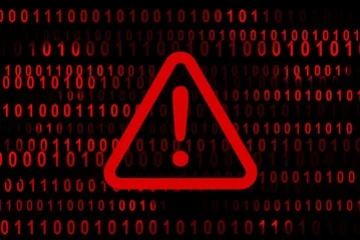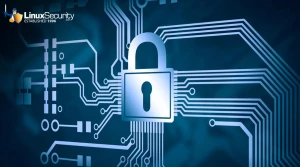How To Manage Linux Kernel Security Patches & Updates

The Linux kernel is at the heart of any Linux operating system, serving as an intermediary between hardware and software to efficiently manage computer resources. As it plays such an integral role, its security must remain paramount.
It is of utmost importance to apply security patches and updates regularly to protect systems against vulnerabilities or potential exploits. In this article, I'll share best practices for managing such updates.
The Critical Importance of Recurring Kernel Updates
 Numerous high-profile security incidents have been linked with unpatched software vulnerabilities, underscoring the importance of timely updates. Due to its central role and exposure, this need is amplified for Linux kernel updates. Regular patches provide relief against vulnerabilities while fixing bugs and improving system stability and performance - not to mention regulatory standards compliance, which is vital for businesses operating across industries.
Numerous high-profile security incidents have been linked with unpatched software vulnerabilities, underscoring the importance of timely updates. Due to its central role and exposure, this need is amplified for Linux kernel updates. Regular patches provide relief against vulnerabilities while fixing bugs and improving system stability and performance - not to mention regulatory standards compliance, which is vital for businesses operating across industries.
Petya and NotPetya ransomware attacks took advantage of vulnerabilities for which patches already existed, which would have prevented attacks had they been applied sooner. This underscores the necessity of constant vigilance and swift response in cybersecurity matters.
Understanding the Kernel Patching Process
Linux kernel versions are released regularly with new security patches and bug corrections. Long-term support (LTS) releases provide stability in environments that do not want frequent changes. Mainline kernels offer the latest features but should not be used in production environments due to potential instability.
People commonly assume that newer kernels are less secure. While new features may introduce vulnerabilities, they often bring security benefits and should not be considered risky. Sometimes, the most vulnerable system isn't one with a brand-new kernel but one left exposed and vulnerable due to known flaws.
 Why Are Linux Admins Struggling with Patch Management?
Why Are Linux Admins Struggling with Patch Management?
Linux administrators face numerous difficulties when it comes to patch management policies. Reboots required for multiple kernel updates can be disruptive and impactful on high availability environments, but assessing impact and maintaining operational continuity are essential tasks that compound kernel updates' complexity.
Furthermore, human error must also be considered when designing automated systems. Even with automated systems, monitoring is crucial in mitigating risks like patch conflicts and unintended side effects. When dealing with industries like healthcare or finance that operate 24/7, finding an ideal time and place for rebooting and updating needs careful consideration.
Best Practices for Kernel Updates
What measures are you taking to make kernel updates seamless and secure? Best practices for kernel updates can help minimize downtime and maximize security. They include:
- Scheduled Updates: Establish regular maintenance windows designed to cause minimum service disruption. Staging Environments provide an ideal place for testing updates before introducing changes system-wide.
- Rollback Procedures: If problems arise after an update, a robust rollback strategy allows quick reversion to an earlier state.
- Incident Response Plan: Having an emergency response plan ready can facilitate swift resolution if an update creates security risks.
- Encryption & Authentication: End-to-end communications encryption and authentication mechanisms during update processes are integral to an effective patch management strategy. Organizations may also benefit from subscribing to vulnerability alerts explicitly tailored for their environment to stay informed of new threats as soon as they emerge.
Tools for Security Patch Monitoring and Management
 Linux administrators can use tools to monitor and manage kernel updates. These include:
Linux administrators can use tools to monitor and manage kernel updates. These include:
- Automated Patching Solutions: Tools like Kpatch allow live kernel patching, making security patches applicable without rebooting.
- Configuration Management Tools: Puppet, Chef, or Ansible can help automate patch deployment across various systems.
- Vulnerability Scanners: Products like OpenVAS or Nessus provide vulnerability scanners, which allow organizations to scan systems for known vulnerabilities and more effectively prioritize patch deployments.
Automating Patch Updates
Automation can improve efficiency. However, to maximize its potential, policies should be established that govern how much of this type of automation should occur, such as automating non-critical systems and manually reviewing updates for crucial systems or servers.
Case Study of Effective Kernel Patch Management
 Google is a model of effective kernel patch management with their approach to its internal systems and cloud services. Employing containerization and microservice architecture, they isolate systems to limit any single update or failure from having too significant an impactful effect. Automation plays an integral part in their strategy alongside code review, testing before deployment, and live migration technology updating the underlying infrastructure with minimal user impact - an excellent model for organizations seeking to modernize their patch management practices.
Google is a model of effective kernel patch management with their approach to its internal systems and cloud services. Employing containerization and microservice architecture, they isolate systems to limit any single update or failure from having too significant an impactful effect. Automation plays an integral part in their strategy alongside code review, testing before deployment, and live migration technology updating the underlying infrastructure with minimal user impact - an excellent model for organizations seeking to modernize their patch management practices.
Our Final Thoughts on the Importance of Linux Kernel Patches & Updates
Security patches and kernel updates are essential to keeping any system secure and should not be neglected or delayed. As the basis of any Linux-based infrastructure, keeping the kernel secure requires constant vigilance. Adhering to structured practices, employing practical tools, and creating a security culture will significantly decrease cybersecurity risks. Linux administrators can ensure their systems' integrity, availability, and safety by understanding how patch management works and engaging in the best practices we've discussed.
















